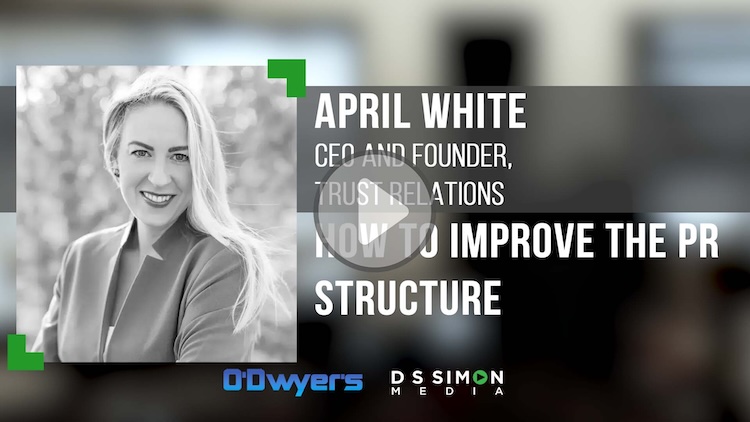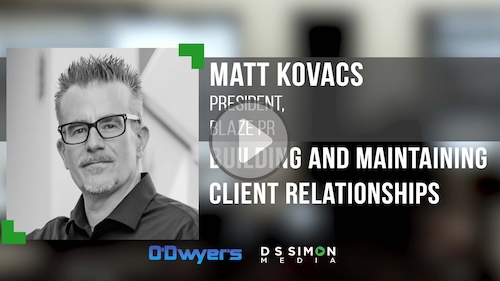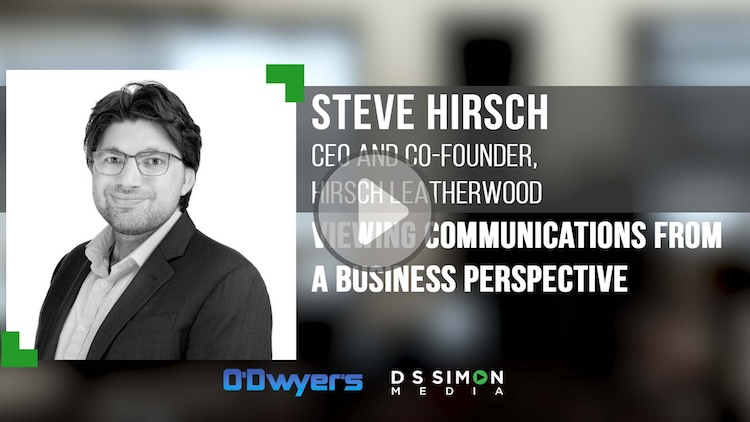 Kathy Bloomgarden |
In the world of communications and media relations, we don’t just talk about the uncertainty that stems from changing business models and disruption. We’re living through it.
Shrinking newsrooms, blurring lines between internal and external comms and rapidly changing technology are challenges we face daily. Just like in nearly every other industry, we have to constantly rethink how we do our jobs. At the same time, the war for the best talent is getting more and more competitive. Employers have to be on top of their games to attract and keep young people – especially the coveted, out-of-the-box creative thinkers.
Recruiting and retaining such talent is more important than ever, because uncertainty in the workplace isn’t going away. People fear losing their jobs to technology – 82 percent of adults in the United States believe that robots and computers will take over most of the work done by humans by 2050 and almost half of companies surveyed by the World Economic Forum expect to reduce their full-time workforce by 2022 due to automation.
With so much negative buzz around the workplace, it’s no wonder that 43 percent of high-growth companies are worried about declining employee engagement. Lack of engagement leads to poor performance and resignations, creating a different kind of workplace crisis that’s hitting us right now -- before the robots even arrive.
So, as employers, we face a triad: constant change, hard-to-find talent, and uncertainty.
Keeping employees engaged and happy at work is the single most important task business leaders face in the future of work. But it’s no longer about perks like food and dry-cleaning and ping pong tables. It requires a deeper commitment. In my experience, here are the four essential steps leaders can take to better engage their people:
1. Help people grow and stretch: A significant number of business leaders (38 percent) believe their workforce could expand in the wake of automation. Rather than simply eliminating jobs, technology will transform the way we work. To take advantage of the coming changes, it’s critical that we commit to teaching people new skills, launch programs that foster leadership development and better refine what career advancement means to individuals. To some people, this will mean opportunities to gain technological expertise. To others, it will be the chance to flex creative muscles. Others will crave flexible schedules and remote working. We should connect with employees as individuals to find the right motivational impetus.
2. Create emotional connections and sense of belonging: People identify with their company more than with their industry or specific profession, meaning that companies with strong values, rewarding cultures and a positive societal impact engender loyal employees. This is especially true for rising talent — 83 percent of millennials believe a company’s success should be measured by not only its financial performance, but by its career development opportunities and impact on society. Under former CEO Joe Jimenez, Novartis launched a program called “Long Live Life,” which reminded people that every person at Novartis came to work every day to help patients live a healthier, more normal life. The stories, photos and personal experiences of employees interacting with cancer patients, with grandparents with heart failure, with young people with psoriasis, etc. instilled dedication and persistence even amidst the pharma industry criticism abounding today.
3. Take a stand on the issues of our day: Employees want to see their company’s top leaders “walking the walk" and not putting performance over values. To do this, leaders should speak openly about the issues that matter to them. Failing to take a stand can spark action from employees — look at the tech industry, where employees from some of the biggest tech companies — Facebook, Google, Microsoft, Palantir — protested working with ICE. These societal topics are real and personal to people. When leadership stands up for an issue, they prove that they care about their employees.
4. The youngest people in the room deserve a voice: Many offices continue to organize themselves into hierarchies. But I’ve learned that the youngest person in the room often has a fresh point of view that changes the conversation, and we need these new lenses that Millennials and Gen Z are keen to articulate. When our agency moved to a fully open-space office layout, it complemented our flat structure and our focus on listening to every level of our team. Remember, these generations are digital natives who are adaptive, entrepreneurial, and highly networked. Moreover, it’s engaging for young people to play a meaningful role in strategic activities – and I believe it makes for a more aligned and dynamic team that’s deeply connected to the organization.
In my eyes, the four pillars above are key to forging ahead. With the Fourth Industrial Revolution on the horizon, we have to steer efforts past lamenting the great changes ahead and focus on how we can build a more flourishing, successful environment in the workplace to leapfrog — not drag ourselves — into the future.
***
Kathy Bloomgarden is CEO of Ruder Finn.










 Have a comment? Send it to
Have a comment? Send it to 
No comments have been submitted for this story yet.